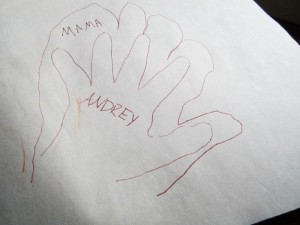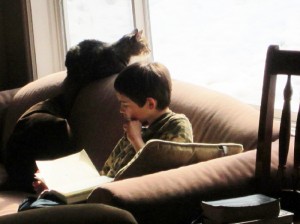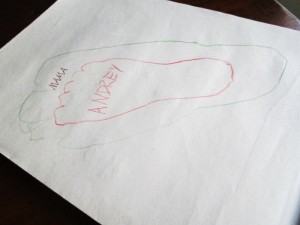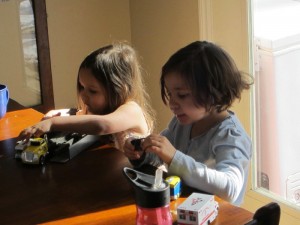
Oh my goodness, did you read that? Part One of Three. My friends, we are moving on from simple posts and delving into the realm of…a series of posts. I know. I think it’ll be okay; let’s just roll with it.
Grab your popcorn or coffee (or both) and enjoy. This is not just for the adoptive parent. This is not just for the prospective adoptive parent. This is not just for the person that comes into infrequent contact with adoptive parents or their children on the third Sunday, Tuesday, or Friday of every month.
This is for you. This is for me.
This series will address some of those questions from the fishbowl that no one wanted to ask in the last post. Here is our heart-deep battle with the curtains drawn aside. Our home probably looks different from many others, though adoptive parents will find many similarities.
We’re not perfect. We’re learning. And we’ve noticed that the only people who are convinced they have it all figured out are those who have never adopted…or had kids at all. Been there?
So I ask that you peek in our fishbowl with eyes of grace. Because we do, too.
The curtain rises. Six children, two cats, and one mama are in various stages of play, school work, and chores. Welcome to our living room.
We’ve had some extremely clean floors lately. They’re just lovely. As you may have noticed from this post, our standard operating procedure around here is to assign extra chores to kids who need some extra discipline, and it’s beautiful two-fold: in theory, the house gets a little cleaner; in practice, small hands are kept busy and (mostly) out of further trouble…for the time being, at least.
One of our favorite assigned chores is scrubbing the floor. The wonderful thing about this is that most of our floor is made of beautifully large squares of faux tile that make this an easy assignment with clear boundaries to delineate.
I point them out and count them as I walk the line: one, two, three, four. Turn left: uno, dos, tres. Multiplied, that’s twelve easy squares. A child can see exactly where he’s supposed to scrub. Simple…right?
Enter the child healing from attachment and control issues.
He scrubs half of the squares he is supposed to, and 93 others outside the lines. He’s thinking, “Will this work? Can I make the rules? What if I do this – it’s not what you said, but sort of what you said, and I’m still doing my own thing? Can I be the boss? Because, look! I did extra!! Doesn’t that count?”
Nope. Negatory, dude.
Cue sound effects. Sobbing and whining. It wavers for a second as he checks to see if I’m paying attention. This is a child headed for Broadway, already working on his first Tony.
Meanwhile in the next room, Reagan is standing on a chair where she had been playing with the other kiddos. She needs to get off the chair now, but she, too, is sobbing and whining, refusing to…just…sit down.
That’s all.
She’s squatting, her bottom only an inch from the seat. Without words, she is begging for someone to help her get down.
And no one helps. No one even offers.
It is so hard for people to understand, because it doesn’t make sense in the eyes of traditional parenting, but those of us parenting children who come to us via adoption are parenting children who have hurts that people can’t see. If our children had a visible wound, then others could see it and would understand not to ‘pick the scab’ off so to speak. Our kids have wounds that others can’t see, so they don’t know when they are ‘picking the scab off’.
- Amanda, adoptive mom
We’re not cruel; we’re refusing to play. We know that she knows what to do: sit down, slide off. We know that crooning over her or helping her do something that she is able to do herself will just throw gas on the fire. (Remember: just because it’s wet doesn’t mean it will put the fire out.)
What is cruel is that for almost seven years it was easier and faster to do everything for her – brush her teeth, get her dressed, move her where she needs to go – and when we brought her to the hotel she had no idea how to even sit in an adult-sized chair at the restaurant. Regular, non-baby toilets terrified her. She was an untrimmed plant that ran wild, but spindly.

So we work all the time, every day, on small skills. Zipping. Snapping. Feeding herself without most of the food landing on the table, the clothes, or the floor. Using a real napkin to wipe her hands on at meals, instead of running sticky fingers through hair for the same purpose.
She has learned so much and she knows what to do now. The battle is deciding to obey, and then actually doing it.
It’s a universal struggle that, if we’re honest, we adults are not immune to.
Another day, two more extra chores for the boy. I vaguely say “Scrub under and around the table,” and he is fine – by my reckoning, he does about 25 squares worth. He’s happy. He’s done. Next chore please?
The next one is more specific: This area, I tell him, pointing out the lines of an easy 3×4 rectangle, only 12 squares.
This is met with feigned panic and torture. Shocked sobbing at the injustice of it all. Whining and crying for ten minutes while scrubbing only part of the assigned area (and quite a bit extra). Ten minutes of constant wailing becomes almost like unheard white noise in the background until it’s abruptly ended with a chipper, “Now can I be done?” that betrays the smoke and mirrors.
I check. From the sheen of water on the ground I can clearly see that he scrubbed exactly two-thirds of the assigned area, and most of the rest of the room.
The boundaries are terrifying. Someone is laying out rules…and it is not him.

He thinks he is seeing a cage, but what he is really facing is a fence to keep him from going over the cliff.
It’s not limited to children from orphanages – some adults struggle with this, too. They started as children who never matured in the way of boundaries. In trying to ram their way through fences on other people’s property, they give themselves headaches when they meet someone who walks the line.
Hoping to find a pushover, they are sorely disappointed when they find themselves over the cliff instead.
It’s often revealed in the double-standard.
I can feel this way and be tolerant, but if you disagree with me, you are intolerant. I can say what I think because this is a free country, but if you say something I disagree with, I’ll call it hate speech. And, by the way…you’re the one that’s judgmental and narrow-minded.
Heads I win, tails you lose.
I refuse to play. I won’t croon, I won’t cry, I won’t enable, and I might not even argue. I’ve learned to set a boundary and walk the line, and not let others cross it.
But I might laugh as they keep trying to drive through the fence.
Curtains. Part 2 is here. Part 3 is here.
_______
Related resources:






I read it – my head is spinning – you have taken on a “God task” – this is how He loves and rears us who He adopted – you know He’ll aid and abet your challenge.
Oh yes! Read, reread, and read again! Well spoken – thank you.
Opening those curtains can be a really good thing. THIS is a good thing.